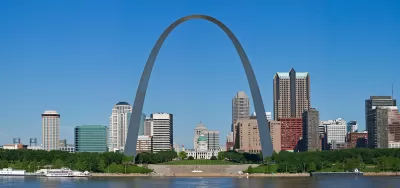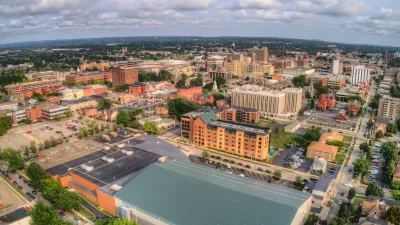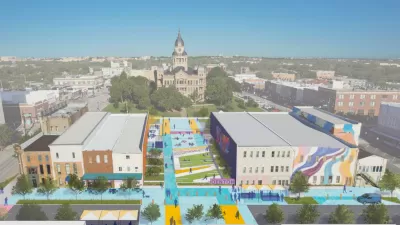Explore the significant role of public-private partnerships in shaping urban development and driving collaboration and innovation for sustainable city growth.

Many governments are in too much debt to fund new city development. Private companies, however, are often in a good financial position to finance new projects and have a solid incentive to do so—they often receive the operating profits once a project is complete. Public-private partnerships (PPPs) are good for both parties and can strongly benefit a city’s development.
Infrastructure development
Public-private partnerships allow cities to build improved infrastructure such as airports, roads, bridges, and utilities. Private organizations invest their technology and funds, and the government offers oversight to ensure the developments benefit the city.
Private companies are often leaders in technology and innovation. PPPs give cities a chance to tap into the private sector’s expertise in waste management, transportation, energy, and smart infrastructure, fostering the development of modern, environmentally friendly urban environments.
Urban regeneration
PPPs can help rejuvenate neglected urban areas. Private developers and the government collaborate to repair or rebuild aging industrial sites, neighborhoods, and businesses to make them more attractive and sustainable.
Private sector involvement introduces an element of competition. It can lead to higher standards and better service delivery in crucial sectors like health care, transportation, and education, improving the quality and accessibility of these public services. Reviving aging neighborhoods improves living conditions, including safer transportation and access to green spaces. It directly enhances residents’ quality of life and contributes to a sense of community.
Economic growth
In 2009, St. Louis City and St. Louis County implemented a small tax hike to fund a redevelopment project for Gateway Arch National Park, raising $159 million in public funding. The privately owned Gateway Arch Park Foundation secured another $221 million.
The funds from this public-private partnership, called the CityArchRiver project, were used to revive the national park’s museums and grounds. The project led to an increase in attendance numbers, bringing in additional revenue.
The CityArchRiver project is a prime example of how PPP can stimulate economic growth by attracting investors, creating jobs, beautifying parks, and improving local businesses. Better amenities and infrastructure draw new businesses and residents to the area, boosting a city’s economic position.
Smart cities
Private companies offer innovative solutions for smart transportation, waste management, and energy management. By funding the integration of IoT-connected sensors into the built landscape, PPPs make it easier to develop sustainable, efficient smart cities.
Faster resource allocation
Private companies provide innovative management practices, new technologies, and financing capabilities to projects, allowing for faster and more efficient urban development. PPPs can speed up project delivery by avoiding bureaucracy that would cause delays.
Private involvement is particularly crucial when urgent infrastructure development or urban regeneration is necessary, such as making repairs or expanding highways. PPPs combine the efficiency, resources, and expertise of the private sector with government guidance, making it easier to use public funds.
Shared risk and responsibility
In PPPs, the government shares risks and financial responsibilities with the private sector. This risk-sharing mechanism improves the private sector’s accountability and lowers the burden on public finances. Private companies have an incentive to deliver successful projects to get a return on their investment, boosting the odds of a high-quality outcome and timely completion.
Long-term maintenance
Many PPPs include long-term maintenance and operations contracts, boosting the odds that infrastructure will be well maintained and effectively managed over its lifespan. Additionally, the private sector often brings expertise in maintenance and operations, contributing to the longevity and sustainability of urban development.
Knowledge transfer and capacity building
In a PPP, government officials can learn from private companies’ best practices, innovative approaches, and management techniques. This capacity building and knowledge sharing fosters a culture of innovation and efficiency in the government sphere, strengthening the public sector’s capacities.
The best of both worlds
Public-private partnerships offer a unique synergy between government and business. By combining the strengths of the public and private sectors, PPPs can create vibrant, sustainable cities that encourage economic growth, a higher quality of life and physical resilience for years to come.

Manufactured Crisis: Losing the Nation’s Largest Source of Unsubsidized Affordable Housing
Manufactured housing communities have long been an affordable housing option for millions of people living in the U.S., but that affordability is disappearing rapidly. How did we get here?

Americans May Be Stuck — But Why?
Americans are moving a lot less than they once did, and that is a problem. While Yoni Applebaum, in his highly-publicized article Stuck, gets the reasons badly wrong, it's still important to ask: why are we moving so much less than before?

Research Shows More Roads = More Driving
A national study shows, once again, that increasing road supply induces additional vehicle travel, particularly over the long run.

Judge Halts Enforcement of Anti-Homeless Laws in Grants Pass
The Oregon city will be barred from enforcing two ordinances that prosecute unhoused residents until it increases capacity and accessibility at designated camping sites.

Advancing Sustainability in Los Angeles County Schools
The Los Angeles County Office of Education’s Green Schools Symposium brings together educators, students, and experts to advance sustainability in schools through innovative design, climate resilience strategies, and collaborative learning.

Using Old Oil and Gas Wells for Green Energy Storage
Penn State researchers have found that repurposing abandoned oil and gas wells for geothermal-assisted compressed-air energy storage can boost efficiency, reduce environmental risks, and support clean energy and job transitions.
Urban Design for Planners 1: Software Tools
This six-course series explores essential urban design concepts using open source software and equips planners with the tools they need to participate fully in the urban design process.
Planning for Universal Design
Learn the tools for implementing Universal Design in planning regulations.
City of Moreno Valley
Institute for Housing and Urban Development Studies (IHS)
City of Grandview
Harvard GSD Executive Education
NYU Wagner Graduate School of Public Service
City of Cambridge, Maryland
Newport County Development Council: Connect Greater Newport






























